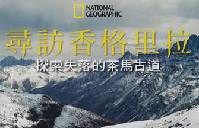Big photographer zooms in on the small details
 |
|
Replacing herding as a livelihood for nomads, harvesting yartsa gombu involves the entire family. Using handmade spades and trowels, Tibetans hack the caterpillar fungus out of the ground. |
"He's always reading books on the plane or on juddering car rides to study these profound topics. He digs for details. For example, he'd ask how deep and vast a lake was when he shot Jiuzhaigou. He'd figure out caterpillar fungus'complicated growth process."
Jiuzhaigou is an ethnically Tibet-an scenic area in Sichuan province celebrated for its multicolored, terraced pools. Caterpillar fungus is a tendril-shaped fungus that sprouts in the spring from the ghost moth it kills in winter.
Yamashita believes photojournalists should have clear visions and execution plans for stories they hope to present.
Many people believe National Geographic photographers' jobs are capturing their travels' most amazing moments. But it's far more thoughtful than that, Yamashita insists.
"We go to the places where we think we can get the pictures. It's hunting. I have a list of photos I need to shoot to tell mystory," he says.
"To ensure I get the best picture, I will visit some places more than once. It sounds like we have a lot of time - three or four months - to finish a project. But actually it is used up quickly."
National Geographic photographers never stage a photo, Yamashita says. They wait for "the decisive moment".
Truth is photojournalists' primary requirement, he believes. Yamashita is able to shoot while close to the subjects and they appear unaware of the photographer.


















